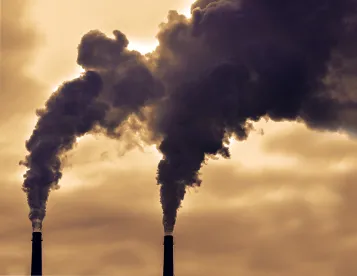On February 8, 2019, Oregon lawmakers formally introduced a proposed cap-and-trade bill to address GHG emissions. HB 2020, introduced by the Joint Committee on Carbon Reduction, would make Oregon the second state after California to adopt an economy-wide cap-and-trade system to regulate GHG emissions. HB 2020 builds upon the Clean Energy Jobs bill, an earlier version of cap-and-trade legislation that was considered in both chambers but failed to pass during last session.
Proposed HB 2020 would cover approximately 80% of GHG emissions in Oregon. Emissions covered include:
- Transportation fuels – Diesel and gasoline supplied in Oregon used in vehicles;
- Electricity – All electricity generated in Oregon, and electricity imported for use in the state;
- Natural gas – All gas supplied in Oregon for use in buildings;
- Large industrial sources – Facilities emitting over 25,000 tons of CO2e from natural gas use, emissions from specific manufacturing processes, and landfills; and
- Other fossil fuels – This includes propane, home heating oil, and distillate fuels used in non-transportation.
Oregon’s proposed cap-and-trade program sets a cap on emissions that declines over years to achieve specified GHG emissions reduction goals. The state would distribute a fixed quantity of emissions allowances each year. Each allowance would then permit an entity to produce 1 ton of emissions per year. Emitters who are covered by the program then either reduce emissions or acquire an emissions allowance. Emitters can also acquire an allowance directly through auction, through trade with other entities, or in certain cases, they may receive allowances directly from the state. The program allows regulated entities to meet up to 8 percent of their compliance obligation using offset credits. Offset projects must result in GHG emissions reductions or removals that are real, permanent, quantifiable, verifiable, enforceable, and not otherwise required by law; and are in addition to any other GHG emissions reductions or removals that would otherwise occur.
Under proposed HB 2020, a GHG emissions cap would decline by a constant tonnage amount each year to achieve a 45% reduction in emissions below a 1990 baseline by 2035, and an 80% reduction in emissions below a 1990 baseline by 2050. Assuming an effective date of the cap-and-trade program in 2021, total emissions covered by the cap would need to decline by a total of 43.4 million metric tons over the 29 year program period to achieve the 80% below 1990 target. In comparison, California’s cap-and-trade program, which began in 2013, has set an interim target of 40% below 1990 levels by 2030. Quebec, which also began in 2013, is on a trajectory to achieve a 38% reduction by 2030.
This proposed legislation will be closely watched and vigorously debated.
Olivia Parish, paralegal assistant, assited with this article.




 />i
/>i

